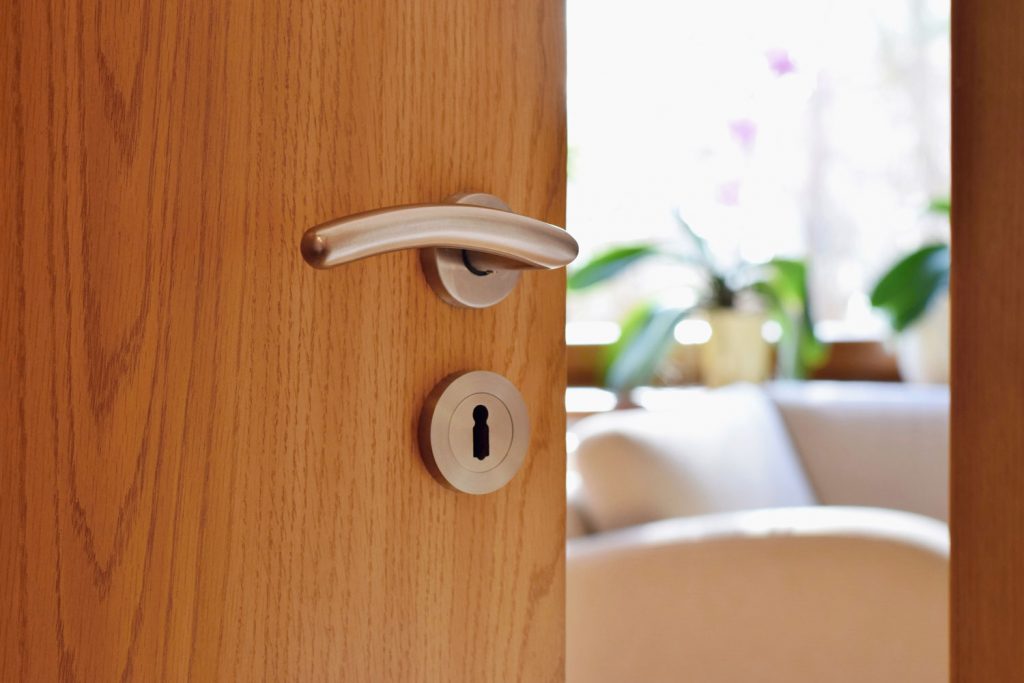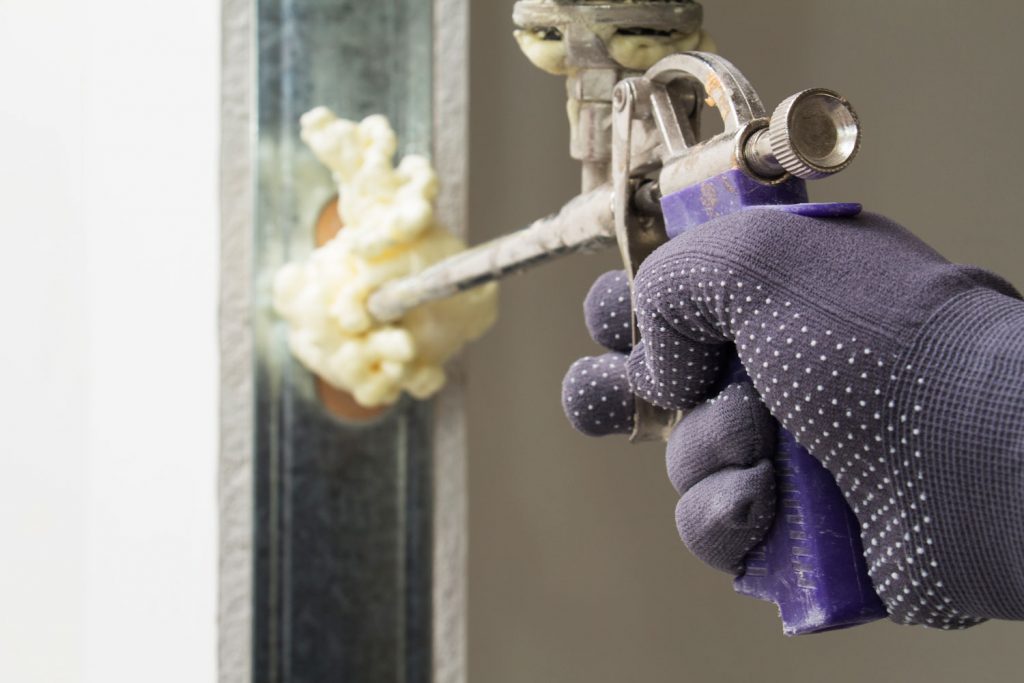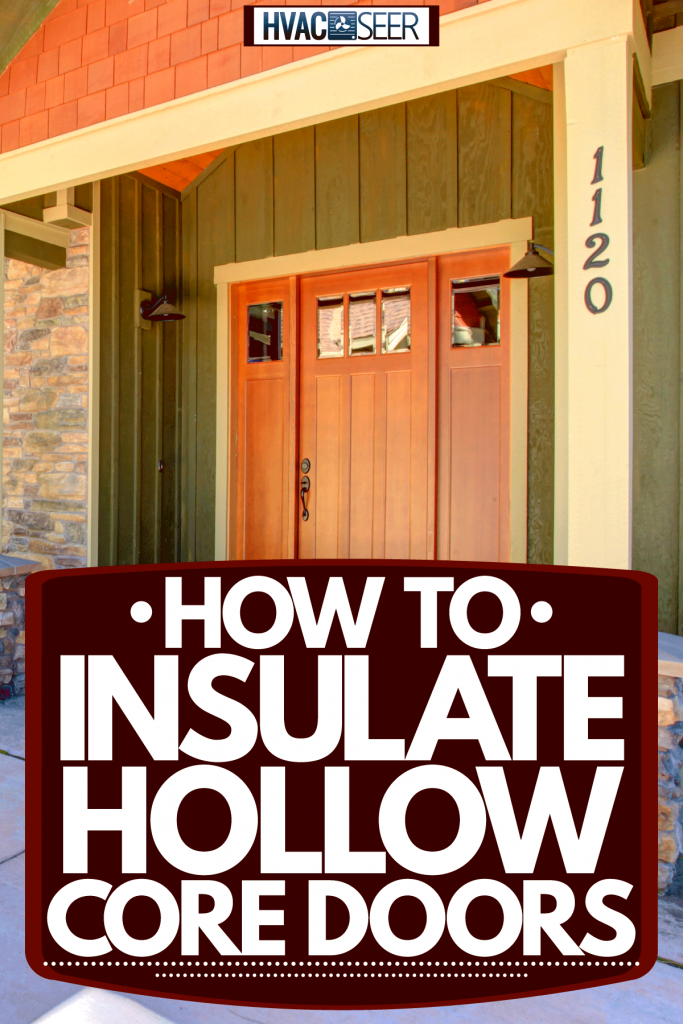Sometimes we cut corners and purchase a door at the moment. Hollow-core doors fit this description. They are cheap and get the job done. However, it comes at a sacrifice for aspects like insulation! If you wonder how to insulate a hollow-core door, we researched the issue and found some answers.
It is difficult to insulate hollow doors due to this filling because foam or sand can’t go more than a few inches. You can:
- Glue a sheet of foam insulation to the back of the door. This method works well if the other side of the door will not be visible such as the garage or attic.
- If the door is somewhere visible, decorate it with cork squares or fabric.
- You can also hang an insulated blanket or curtain on the back of the door.
There are numerous ways that you can insulate a hollow-core door. Let’s explore these options. This way, you can figure out what works well for you. For more information, keep reading ahead.
Why Is It Difficult To Insulate Hollow Core Doors?
Hollow core doors are not exactly empty inside. As some users have pointed out, they do have an internal structure for support. Usually, these are pieces of cardboard glued between the panels. These cardboard structures look like honeycomb and make it difficult for the foam or sand to spread from cell to cell. It is difficult, but certainly not impossible, to fill the core of a hollow-core door.

Among various methods, eternally gluing foam insulation sheets to the door is perhaps the easiest of the bunch.
Externally Glued Foam Insulation Sheets
Foam insulation sheets are a cheap and easy solution. Here are the steps you need to know if you wish to insulate a hollow core door using foam insulation:
- Measure the width and height of the hollow-core door.
- Cut a segment of the rigid foam insulation according to the noted measurements using a craft knife. If the door is large, you may need to glue together pieces of the foam insulation sheets.
- Apply a coat of epoxy adhesive to the side of the door where the foam insulation will be attached. This part should be the least visible side.
- Press the foam insulation sheet to the door carefully and hold it in place for 15-30 seconds until the epoxy sets.
- Let the epoxy cure for 24 hours before you begin decorating the door.
However, if you don’t want to ruin the aesthetics of your door or home by gluing an insulating foam sheet to the exterior of your door, you can try filling it with foam.
How Do You Fill A Door with Foam?

Remember that this might not be as simple a procedure as it looks. You have to take into account the various builds and fillings of a hollow-core door.
Here is a simple guide on how you can fill a hollow core door with foam:
- Drill holes in the top, bottom, and sides of the door. These holes should fit the tube that sprays out the foam from the can.
- Wear gloves before you handle cans of foam.
- Inject foam into the door and let it expand to fill the cavities. Be careful because these foams thicken suddenly and quickly. Additionally, too much could damage the door.
- Remove excess foam after letting it expand fully for an hour.
- Cover the sides of the door with a thin strip of vinyl or aluminum.
If you need visual assistance, here’s a YouTube video to guide you:
Although the video focuses on soundproofing, the method is essentially the same. Some people prefer filling their hollow core doors with sand because it adds weight to the door. Sand is also easier to pour inside than foam because sand falls with gravity.
What Is A Foam Core Door?
Foam core doors have the weight of a semi-solid and the rigidness of a solid core door. They are full of foam that is usually environmentally friendly. Additionally, it provides a good level of insulation and privacy between rooms by absorbing heat and sound.
Foam core doors are cheaper than solid core but pricier than hollow core doors. They also provide more benefits than a standard hollow-core door and a more durable option than the latter.
Can You Fill A Hollow Door With Sand?

Technically, yes, you certainly can fill hollow core doors with sand. However, this procedure will require some basic carpentry skills and tools. Knowledge of the inner workings of the door that you plan on filling is also beneficial. Here are some simple steps on how to go about this job:
- Identify the hollow cells in the door that you intend on filling.
- Lay the door on its side and position the door so the hinge edge is facing upwards.
- Using a hole saw drill that is 1 inch in diameter, drill out a hole at each open cell inside the door.
- Pour in the sand through these holes.
- Patch up the holes using veneer sheets when you finish.
- Add longer support screws to the hinges to give some extra strength to the doors.
Nevertheless, if you are going to go through this process, it is essential to get hinges that will support the door. Additionally, hollow core doors are not heavy in general. So, if you fill them with sand, as some users warn, the doors will likely break.
How To Make Hollow Core Doors Feel Heavier?
Lighter doors swing open or shut with the slightest gust of a breeze. Heavier ones are easier to handle and are adjustable according to your needs. Hollow-core doors will feel heavy if you fill them with sand, but there are other ways of adding weight to the doors as well. You could try spring-loaded hinges that have adjustable tension for additional force.
Click here to see these hinges on Amazon.
You can also use dense foaming material such as cans of foams or sheets of mass-loaded vinyl that you can either place inside the door or cover the door externally by gluing the sheets on the door. The type of door that you will work with will influence the method you choose. The material that you have readily available at your local hardware store is another consideration.
Can You Sand And Stain Hollow Core Doors?
Give a cheap hollow core door a luxurious touch with a stain. Hollow core doors are so easy on the pocket compared to solid wood panel doors. With a bit of work, they can be attractive as well! Hollow-core doors can look great if they are stained and sealed properly.
Here are the steps to staining a hollow core door:
- Buy a wood stain that matches your door and also compliments the color scheme of the room.
- Set up a couple of sawhorses in a well-ventilated area. Lay the door across the sawhorses. You may lay plastic tarps under your work area so that the stains don’t splatter and spill.
- Start by removing the doorknob by loosening the screws.
- Sand the door using fine 180-grit sandpaper on both sides of the door to smooth out any surface irregularities by sanding the door's wood veneer skin. You can also use a power sander to get the job done faster. Sand up and down along the grain of the wood, not side by side across the grain.
- Select the type and color of stain that you wish to use. Gel stains are less messy and easier to control as compared to liquid stains.
- Use a stain brush for the liquid or a soft cotton cloth for the gel stain. Start applying the stain in long, even strokes, working with the grain of the wood. Apply it on one side of the door. Wipe away excess stain with a clean piece of cloth.
- Stain all four edges of the door. Avoid getting stains on the hinges.
- Let the stained side of the door dry thoroughly for 24 hours before turning over the door.
- When you finish staining the entire door, apply a clear sealer on the door using the same methods as above. Use a brush for the application of the sealer.
- Reattach the doorknob and then the door.
Final Takeaway
Always check with local fire codes and rental agreements before you make any amendments to a hollow-core door. Be sure to follow appropriate safety procedures and do thorough research before embarking on DIY projects that may affect the safety of you, your family, and your home. Have fun making improvements to your home!
Before you go, are you searching for different types of insulation? We can offer some guidance. For more information, check out our post here.
Are you curious to know if curtains offer insulation? For more information, check out our post here. Until next time!


